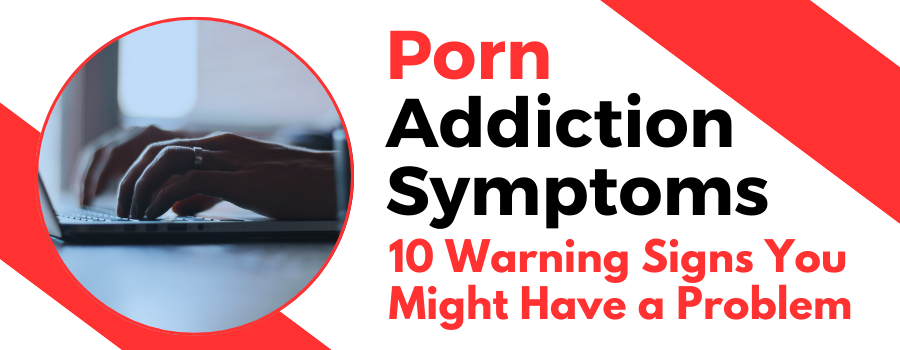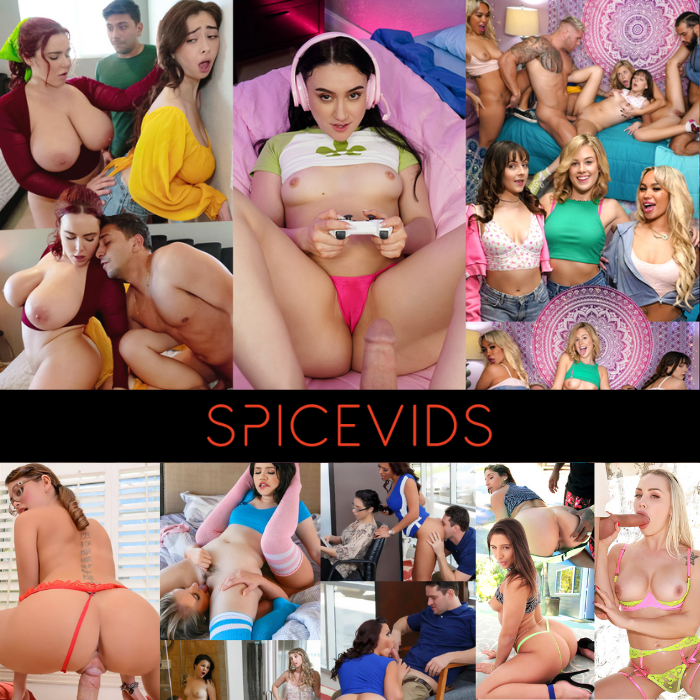Table of Contents
How to Recognize the Signs of Porn Addiction
In today’s digital age, pornography is more accessible than ever before. For many individuals, it’s a routine part of life — used occasionally for entertainment or as a complement to a healthy sex life. However, when porn consumption becomes excessive or starts to interfere with daily responsibilities, relationships, or emotional well-being, it may be a sign of deeper issues.

Porn Addiction Symptoms: 10 Warning Signs You Might Have a Problem
Recognizing porn addiction symptoms is a crucial first step in understanding whether viewing habits have crossed the line into something more concerning. Common symptoms include a compulsive urge to watch porn despite negative consequences, increased time spent viewing explicit material, neglecting responsibilities, emotional distress, and a decline in interest in real-life intimacy. These signs can gradually erode mental health, strain personal relationships, and impact overall quality of life.
At Free-PornTrials.com, we believe in promoting responsible adult content consumption. While we provide access to trial services for exploring adult material, we are equally committed to supporting our users in recognizing and managing unhealthy behaviors. Understanding porn addiction symptoms allows individuals to make informed decisions about their habits and seek help when necessary.
Whether you’re here to explore responsibly or looking for guidance on identifying porn addiction symptoms, we’re here to provide resources that promote balance, awareness, and personal well-being.
This article aims to help users identify porn addiction symptoms, offering insights on how our services, alongside practical guidance, can help users regain control and ensure their well-being. We believe in providing not just products, but also the support and resources to promote a healthier relationship with adult content.
What Is Porn Addiction? Understanding the Difference Between Porn Use and Porn Addiction
Watching porn doesn’t automatically mean you have an addiction. Many people use porn occasionally without it interfering with their lives. However, when porn consumption becomes compulsive and starts affecting your relationships, work, or mental health, it could be a sign of porn addiction.
What Is Porn Addiction?
Understanding the difference between occasional use and porn addiction symptoms is key. For many people, viewing adult content occasionally is a normal part of life and doesn’t interfere with their relationships, work, or personal well-being. However, when porn use becomes compulsive or begins to negatively impact daily functioning, it may signal something more serious.
Recognizing porn addiction symptoms is essential in identifying when casual use crosses the line into problematic behavior. These symptoms can range from an inability to control the urge to watch porn to feelings of shame, guilt, or anxiety associated with the habit. In more severe cases, it can interfere with personal relationships, job performance, and emotional stability.
Is Porn Addiction a Real Disorder?
Although porn addiction is not officially classified as a medical diagnosis by all health authorities, many mental health professionals recognize it as a form of behavioral addiction. Similar to issues like gambling or gaming addiction, it involves a compulsive pattern of behavior that persists despite negative consequences.
People experiencing porn addiction symptoms often report an ongoing struggle to stop or cut back on their viewing, even when it’s clearly causing problems in their lives. This disconnect between intention and behavior is a hallmark of addiction.
Common Symptoms of Porn Addiction:
How to Recognize the Signs
If you’ve ever asked yourself, “Do I have a porn addiction?” you’re not alone — and asking the question is already a powerful first step toward self-awareness. Understanding the warning signs can help distinguish between casual use and problematic behavior. The following porn addiction symptoms can appear in many aspects of your life, including your thoughts, emotions, relationships, and even your physical health.
- Compulsive Need to Watch Porn: One of the most telling porn addiction symptoms is the uncontrollable urge to view porn, even when it’s not enjoyable or convenient. You might find yourself watching more often, for longer periods, or in inappropriate situations — like during work hours or in public settings.
- Intrusive Thoughts and Trouble Focusing: Constant preoccupation with porn or sexual fantasies can interfere with your ability to concentrate on everyday tasks. If your mind frequently drifts toward porn, making it difficult to be present at work, school, or in conversations, this could be a symptom of addiction.
- Mood Swings When Unable to Watch: Experiencing emotional distress — such as irritability, anxiety, or even depression — when you’re unable to access porn is another common porn addiction symptom. This emotional dependence can signal a deeper behavioural pattern that’s becoming harder to control.
- Neglecting Responsibilities and Relationships: When porn use starts taking priority over important commitments or personal relationships, it’s a sign that something deeper may be going on. Missed deadlines, cancelled plans, or arguments with loved ones can all stem from the impact of these habits.
- Loss of Interest in Real-Life Intimacy: A declining interest in physical or emotional intimacy with a real partner is a serious red flag. This is one of the more distressing porn addiction symptoms, as it can lead to isolation, relationship breakdowns, and lowered self-esteem.
Becoming aware of these porn addiction symptoms doesn’t mean you need to panic — it means you have the information to make empowered, intentional choices. Whether you’re simply reassessing your habits or considering seeking help, recognizing the signs is the first step toward reclaiming balance and well-being.
Behavioral Symptoms of Porn Addiction
- Loss of Control: You’ve tried to cut back on porn use but can’t.
- Excessive Time Spent Watching Porn: Spending hours online looking for porn, leading to neglect of work, relationships, or personal responsibilities.
- Escalation: Needing more extreme or frequent material to achieve the same satisfaction.
- Viewing Porn in Inappropriate Settings: Watching porn at work, in public, or during social gatherings.
- Secrecy and Lying: Hiding your porn habits from your partner, friends, or family.
Emotional Symptoms of Porn Addiction
- Guilt or Shame After Watching Porn: Feeling embarrassed or distressed post-consumption.
- Using Porn to Cope with Stress or Anxiety: Turning to porn during times of emotional distress.
- Mood Swings: Feeling irritable, anxious, or restless when you can’t watch porn.
Physical Symptoms of Porn Addiction
- Sleep Disruption: Staying up late or sacrificing sleep for porn.
- Neglecting Health: Ignoring meals, exercise, or hygiene due to compulsive porn use.
- Sexual Dysfunction: Struggling with erectile dysfunction or finding less satisfaction in real-life sexual intimacy.
The Impact of Porn Addiction on Your Life
Porn addiction doesn’t just affect the person watching—it can negatively impact relationships, work, and personal well-being.
How Porn Addiction Affects Relationships
- Emotional distance from your partner.
- Conflicts over porn use or secrecy.
- Unrealistic expectations about sex, leading to dissatisfaction in real-life intimacy.
Porn Addiction’s Impact on Work or School
- Decreased productivity due to time spent watching porn.
- Missing deadlines or skipping classes to engage in porn use.
- Difficulty focusing on tasks or responsibilities.
Personal Life Consequences of Porn Addiction
- Losing interest in hobbies or social activities.
- Isolating yourself from friends and family.
- Feeling disconnected from real-life experiences.
Root Causes and Risk Factors of Porn Addiction
Understanding the underlying causes of porn addiction can help you address the problem more effectively.
Mental Health and Porn Addiction
- Depression and Anxiety: Many people use porn as a way to escape feelings of sadness or worry.
- Trauma: Past emotional or physical trauma can increase the risk of developing porn addiction.
Accessibility & Escalation
- The internet makes porn available 24/7, contributing to compulsive viewing habits.
- Escalation occurs when you need more extreme content to achieve the same level of arousal.
Personality Traits That Increase the Risk
- Impulsivity or thrill-seeking behaviour.
- A history of other addictive behaviours, such as gambling or substance abuse.
Self-Assessment: Do I Have a Porn Addiction?
If you’re unsure whether your porn use has crossed into addiction, ask yourself these questions:
- Have you tried to cut back on porn but found you couldn’t?
- Do you feel anxious or irritable when you can’t watch porn?
- Is your porn consumption interfering with work, relationships, or daily life?
- Do you feel guilty or ashamed after watching porn?
- Are real-life sexual experiences less satisfying than porn?
- Are you spending more time watching porn than engaging in activities you used to enjoy?
Answering “yes” to several of these could indicate a porn addiction.
When to Seek Help for Porn Addiction
If porn use is causing distress or interfering with your daily life, it may be time to seek professional help.
Signs You Should Seek Professional Support
- Struggling to control your porn habits despite negative consequences.
- Feeling isolated or disconnected from loved ones.
- Experiencing anxiety, depression, or sexual dysfunction related to porn use.
Professional Help Options for Porn Addiction
- Therapy: Cognitive Behavioural Therapy (CBT) and sex addiction counselling are effective treatments.
- Support Groups: Join groups like Porn Addicts Anonymous or Sex Addicts Anonymous for peer support.
- Online Resources and Helplines: Access free resources to guide you through recovery.
Tips for Managing or Reducing Porn Use
If you’re not ready for professional help but want to manage your porn consumption, here are some strategies:
- Set Boundaries: Use apps or software to block adult content and limit screen time.
- Identify Triggers: Recognize when you’re turning to porn—whether it’s due to boredom, stress, or loneliness—and find healthier coping mechanisms.
- Find Alternatives to Porn: Engage in hobbies, exercise, or creative outlets that bring you fulfillment.
- Strengthen Real-Life Connections: Invest in relationships and social activities.
- Accountability Partners: Share your goals with a trusted friend or join a support group.
Debunking Common Myths About Porn Addiction
Separating Fact from Fiction
Understanding the realities of porn addiction is essential for breaking down stigma and encouraging open, honest conversations. By addressing misconceptions and highlighting the truth, we can help individuals better recognize porn addiction symptoms and feel more empowered to seek help if needed.
Myth: Everyone who watches porn is addicted.
Truth: Watching porn, even regularly, does not automatically indicate an addiction. It’s not the frequency of use that defines addiction, but rather the impact it has on your life. Someone might watch daily without experiencing any problems, while another person may show clear porn addiction symptoms, such as loss of control, emotional distress, or negative effects on relationships and work, even with less frequent use.
Myth: Porn addiction only affects men.
Truth: While porn addiction is more commonly reported among men, it’s a misconception that it’s a male-only issue. Women can and do experience porn addiction symptoms as well. Regardless of gender, individuals may struggle with compulsive viewing habits, secrecy, shame, and disruptions to emotional or sexual well-being. Addressing this myth helps create space for everyone to seek support without judgment.
Myth: Feeling guilty means you’re addicted.
Truth: Guilt around porn use often stems from personal values, cultural background, or religious beliefs — not necessarily addiction. While guilt may accompany porn addiction symptoms, it alone is not enough to indicate a problem. Addiction is better identified through patterns like persistent cravings, failed attempts to stop, or continued use despite harm. Differentiating between moral discomfort and clinical symptoms is key to accurate understanding and proper help.
Resources for Porn Addiction Help
If you recognize the symptoms of porn addiction in yourself, know that help is available.
Therapists and Counseling Services
Look for certified sex addiction therapists or counselors specializing in behavioral addictions.
Helpful Books on Porn Addiction
- “Your Brain on Porn” by Gary Wilson
- “The Porn Trap” by Wendy Maltz
Apps and Tools for Managing Porn Use
- Fortify: An app designed to help reduce porn use.
- Covenant Eyes: Accountability software for safe internet use.
Websites for Additional Support
If you or someone you know is struggling with porn addiction, it’s important to know that support is available. Here are some trusted resources that can help:
- Porn Addicts Anonymous (PAA) – www.pornaddictsanonymous.org: A support group offering community and resources for individuals seeking recovery from porn addiction.
- NoFap – www.nofap.com: An online community dedicated to helping people reduce or eliminate their porn use through challenges, resources, and support.
- Sex Addicts Anonymous (SAA) – www.saa-recovery.org: A 12-step fellowship providing support for people struggling with compulsive sexual behaviors, including porn addiction.
- Covenant Eyes – www.covenanteyes.com: Accountability software designed to help users stay accountable by monitoring internet activity and blocking adult content.
- Therapists and Counselors Directory – www.psychologytoday.com: Find licensed therapists and counselors specializing in addiction and behavioral health issues, including porn addiction.
These organizations and tools can provide additional help and community support for anyone looking to reduce or overcome porn addiction. Taking the first step towards seeking support is an important move toward a healthier, more balanced life.
FAQs About Porn Addiction
How to Stop a Porn Addiction
Stopping porn addiction involves building awareness, setting boundaries, and replacing unhealthy habits with positive alternatives. Start by identifying your triggers—stress, loneliness, boredom, etc.—and work to reduce them. Use tools like website blockers, time-tracking apps, and accountability partners to help limit access and temptation. Therapy (especially CBT) can address the root causes, while support groups like NoFap or SAA provide community and structure. Build a lifestyle with purpose: focus on fitness, relationships, hobbies, and work that gives you fulfilment. Recovery takes time and commitment, but progress is possible with the right strategies and support.
How to Help Someone with a Porn Addiction
Supporting someone with a porn addiction starts with empathy, not judgment. Create a safe, open space where they feel comfortable sharing. Encourage them to seek professional help, such as a therapist experienced in behavioral addictions. Offer resources like books, forums, and apps that support recovery. Avoid shame-based language—focus on understanding and positive change. Be patient, celebrate their progress, and remind them that relapse is part of the journey, not the end of it. Most importantly, respect their autonomy; they must choose recovery for themselves, but your support can make a big difference.
Can porn addiction affect relationships?
Yes, porn addiction can create emotional distance from partners, lead to conflicts, and cause unrealistic expectations about sex.
Is porn addiction recognized as a medical condition?
While not universally recognized in medical communities, many mental health professionals treat porn addiction as a form of behavioral addiction.
What are the first steps to overcoming porn addiction?
Acknowledging the problem, identifying triggers, and seeking support through therapy or support groups are key first steps.
What are the most common porn addiction symptoms?
Common porn addiction symptoms include compulsive viewing, inability to stop despite consequences, neglect of responsibilities, emotional distress, and reduced interest in real-life intimacy.
How do I know if my porn use is unhealthy?
If your porn use is interfering with your work, relationships, or mental health—or if you feel unable to stop despite wanting to—it may be a sign of porn addiction.
Can porn addiction cause anxiety or depression?
Yes, excessive porn use and unresolved porn addiction symptoms can contribute to feelings of anxiety, shame, guilt, and even depression over time.
What triggers should I avoid during porn addiction recovery?
Common triggers include stress, boredom, loneliness, and access to explicit content. Recognizing your personal triggers and learning how to manage them can help reduce porn addiction symptoms.
Conclusion: Moving Toward a Healthier Relationship with Porn
Recognizing that your porn use may be affecting your life in negative ways is a powerful first step toward meaningful change. Whether it’s impacting your relationships, work, or emotional well-being, becoming aware of potential porn addiction symptoms can help you better understand your habits and where they may be leading.
Choosing to cut back, take a break, or seek professional support doesn’t mean you’ve failed — it means you’re actively taking control of your mental and emotional health. Recovery from compulsive behaviour is absolutely possible, and it starts with self-awareness. Pay attention to common porn addiction symptoms, such as an inability to stop watching despite consequences, neglecting responsibilities, or feeling anxious or distressed when not viewing.
Approach your journey with self-compassion and patience. Change doesn’t happen overnight, but every small step counts. Remember, you’re not alone. Many people struggle with these issues, and there are resources, communities, and professionals who are ready to help.
Understanding porn addiction symptoms and their impact is the foundation for building a healthier, more balanced relationship with porn — one that aligns with your personal values and overall well-being.
Popular Porn Trials:
-
Blacked Porn$1.00
-
BangBros Trial$1.00
-
Spicevids Free Trial$0.00



